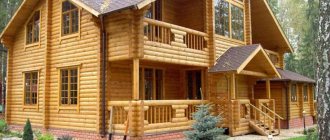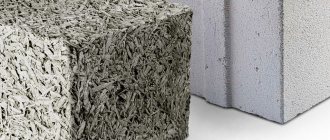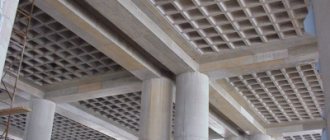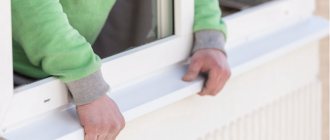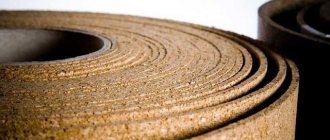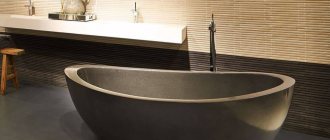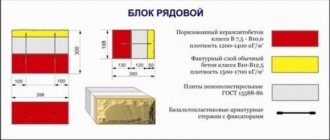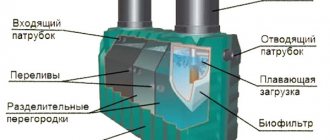Hello, dear readers!
How are you? Are you ready for the cold? Have you warmed up? Today I came across an article that, to put it mildly, puzzled me. It said that this winter would be very vigorous. That is, frosty and snowy. Well, what can we say? There are both advantages and disadvantages to this. The positive aspect is the fun entertainment - sleds, skates, skis, snowballs. And negative - heating the house will cost a pretty penny. In order not to be speechless when looking at the amount on the receipt, it is recommended to insulate the “nest”. Fortunately, there are plenty of materials for insulating a room.
I decided to look at what manufacturing organizations are offering today. My attention was drawn to the “old new” raw material – foam glass. Why "old new"? Well, how can I explain it to you? The old one is 86 years old, and the new one is improved. However, let's study the material in more detail. So, here’s a topic for you - foam glass: disadvantages, advantages, production, cost and much more. Shall we begin? Go!
Cellular glass: product features
A little history
Foam glass was invented by the honored worker of technology and science Isaac Ilyich Kitaygorodsky. The professor specialized in glass production technology, because he considered it the material of the future. The professor's invention was improved by US specialists in the 40s. Initially, foam glass was used as a floating material. But it soon became clear that it demonstrates excellent heat and sound insulation properties, is easily glued together, and is easy to process. Therefore, it was decided to use it in construction.
Thus, in Canada a building appeared, created from concrete slabs with a layer made of cellular glass. This event happened back in 1946. The experiment was very successful. The material has received well-deserved recognition. But, to the great regret of the inventor, it did not gain popularity in Soviet countries, since the cost was high and the production technology had not been developed. It was manufactured in the USSR, but the quality of the product left much to be desired, which led to the closure of factories.
But currently the production of this product is in full swing!
Concept
Balcony insulation
Foam glass is a heat-insulating material made from silicate glass and raw materials that promote gas formation. The insulation is often called foamed or cellular glass because it has a honeycomb-like structure. Due to this, it can boast of unique properties.
Production
Thermal insulation raw material - foam glass - is manufactured using powder technology. The process is quite simple, but labor intensive. It consists of the following steps:
- broken silicate glass is crushed;
- the crumbs are thoroughly mixed with gas-forming substances;
- the charge (homogeneous mass) is placed on a conveyor belt or in molds and sent to the oven;
- the glass softens, turning into a liquid but viscous mixture;
- under the influence of gases the gruel foams;
- the mixture cools slowly;
- the product is formed into blocks, slabs (sheets) or granules;
- the product is processed according to requirements;
- slabs, granules or blocks of foam glass are packaged.
We can say that ordinary glass, which is used in everyday life, and the cellular product are twins, since they are identical in composition, the only difference being the gas-filled pores of the foamed product.
Only high-quality materials and innovative equipment are used to produce blocks, granules or slabs. In addition, the products undergo control, which is carried out by experts in accordance with European quality standards.
What is foam glass?
The combination of two different substances in one material always gives an interesting result. This happened with foam glass. The classic silicate glass that is used in our windows is a transparent, very hard and fragile material. Foam is a weightless, “ephemeral substance”. Its basis is a gas, the bubbles of which are held together by the thinnest layers of liquid by the force of surface tension.
You may ask, is it possible to combine incompatible things? It turns out that it is possible. The production of foam glass consists of heating a silicate mass into which a gas-forming substance is added. Under the influence of high temperature, the raw material melts, and the gas-forming agent decomposes, releasing tiny bubbles. Caught in the hot melt, they, like “flies in amber,” remain in it forever.
As a result, the material receives unique properties:
- Ease;
- Strength;
- Chemical inertness;
- Waterproof;
- Heat resistance and non-flammability.
The material inherits some of the listed properties from silicate glass, and receives some from gas microcapsules. Foam glass loses its transparency, but acquires excellent thermal insulation and acoustic characteristics.
Kinds
Today there are two types of foam glass - granular and block.
In addition, there are three types of granular insulation:
- foam glass gravel;
- foam glass crushed stone;
- foam glass sand.
There are also three types of block insulation:
- slabs (foam glass sheets);
- blocks;
- shells (shaped foam glass).
If we compare the thermal properties of granulated and block glass, of course, gravel, crushed stone and sand are inferior to slabs, shells and blocks. But, nevertheless, granular insulation is more popular due to its relatively low price.
The best and most sought after
If we talk about the most popular insulation on the market, then 2/3 of all houses are insulated using mineral wool , both for concrete floors and beams.
It is chosen for its moisture resistance, thickness, fire resistance and elasticity.
At the moment, this is the best option in terms of price and quality. It is easy to install and requires no further maintenance. It is used for both warm and cold attics.
However, foam, polystyrene insulation, although not as malleable in shape, does not require the use of a vapor barrier. They are not picky in installation because they do not crumble and do not get under the skin or into the respiratory tract. But they are more flammable, and this indicator reduces the scores for this material.
Natural insulation materials provide an advantage only from an environmental point of view; otherwise, they burn great and serve as a home for mice and parasites.
Granular insulation creates a truly warm atmosphere, but it is incredibly heavy and some types require the use of expensive equipment.
The best thermal insulators for warm and cold attics are those that are sprayed , filling all cavities, relief and cracks. They do not burn or ignite, do not require vapor or waterproofing, do not decompose over time and are not attractive to rodents and bacteria.
But since spraying work costs several times more than installing tile or matte insulation yourself, foam insulation is still left out.
Scope of application
Foam glass, due to its properties, is used for insulation:
- private houses;
- outbuildings;
- sports complexes;
- underground structures;
- industrial buildings;
- medical institutions;
- educational institutions;
- office facilities;
- recreational facilities - (for example, for baths, water parks, etc.).
The scope of application of the material is very wide, since the thermal insulation material is impeccable:
- to insulate the ceiling: the attic floor is filled with cement-sand mortar, and then the slabs are laid, after which a reinforcing screed is made;
- for walls: the surface is prepared, special glue is applied, the product is applied, pressed tightly and covered with plaster;
- for the floor: a layer of sand (3–5 cm) is poured, thermal insulation is laid or backfilled, joints are sealed, screed is applied, the covering is installed;
Yes, the material is popular due to its good technical characteristics.
Protection
If you can't afford solid insulation, take steps to rodent-proof your insulation. When insulating with materials made from natural raw materials, give preference to balls, which are immediately concreted. Concrete will protect the foam or straw from mice's teeth.
Give preference to a strip foundation - it will be difficult for rodents to overcome. And under the floor of the first floor, place any loose insulation and broken glass. It is important to adhere to the technology of laying the heat insulator. Gross violations of work stages will lead to the appearance of gaps, which mice will certainly take advantage of.
If problems arise during operation, additional measures will have to be taken. There are several main ways to control rodents:
When planning construction, it is worth wrapping the building with a metal grid (cells 5 by 5 mm). But sometimes rodents chew through a mesh with a wire thickness of 1.5 mm.
When the mice are already infested
When the mice have already started, you can do the following. The first method is to use an “expanded clay” castle by firing low-melting clay. A 30 cm layer of expanded clay is laid on the ground, which is covered on top with plastic film and two layers of OSB-3. Laminate is laid on top of these layers. This method is very effective. Also, a 10 cm layer of expanded clay is placed between the main and subfloor.
Acoustic devices will also be effective, especially those imitating the sounds of animals and birds of prey that feed on mice. And if none of the above helps, get a cat and mouse trap.
Now you know which insulator mice cannot chew on - penoizol. All other materials have protective measures.
Source
Properties
Cellular glass is famous for the following properties:
- noise absorption – 56 dB;
- water absorption – 0–5%;
- vapor permeability – 0–0.005 mg/m*h*PA;
- thermal conductivity – 0.04–0.08 W/(m*K);
- humidity (sorption) – 0.2–0.5%;
- bending strength – 0.4–0.6 MPa;
- compressive strength – 0.7–4 MPa;
- effective operating temperature – -260 – +400°С;
- actual operating temperature – -260 – +230°С;
- deformation temperature – +450°С.
Based on this data, recognized advantages and annoying disadvantages can be determined.
Economic comparison of attic insulation options during major roof repairs
| Layers of roof structure | Crushed foam glass (fraction 5-20 mm) | Mineral wool | Extruded polystyrene foam (EPS) | Expanded clay gravel |
| Total cost of the roof structure RUB. per 1 m2, | 1215 | 1310 | 1660 | 1390 |
| Increase in price, rub. per 1 m2, | — | 95 | 445 | 175 |
| Increase in price, % | — | 7,25 % | 26,81 % | 12,59 % |
| Structure weight, kg | 34 | 32 | 85 | 230 |
Advantages
The material has many advantages. Let's look at the main ones.
- Safety. Does not contain substances harmful to the human body.
- Environmentally friendly. Made from environmentally friendly raw materials.
- Hygiene. Has antiseptic properties.
- Durability. Service life - more than 100 years.
- Versatility. It is used for insulation of any buildings.
- High adhesion. Combines with a lot of building materials.
- Biological passivity. He is not afraid of rodents, insects and microorganisms.
- Resistance to the negative effects of climatic factors. He is not afraid of temperature changes, precipitation, UV, etc.
- Resistance to mechanical factors. It does not deform and does not lose its properties, since it can withstand impacts and high loads.
- Unaffected by chemical factors. Does not react to acid.
- Resistance to thermal factors. Foam glass is an absolutely non-flammable insulation material.
- Ease of processing. It cuts perfectly with a regular hacksaw.
The material is worthwhile, but there are drawbacks and there are many of them, unfortunately.
roof insulation with foam glass
Main functions
The attic floor is insulated only so that the cold from the roof does not penetrate inside the room or, conversely, the heat from the heated room does not escape through the ceiling. If the task is to insulate the entire attic and turn it into a living space, then it is necessary to insulate the rafter system in addition to the floor itself. This is the difference between cold and warm insulation.
Reference . The insulation of the ceiling is carried out from the attic side, and not in the room itself, in order to save space. The exception is thin foil material.
In the process of insulating the attic floor, you need to think not only about how warm the room will be, but also how to protect the insulating material itself from rotting as a result of condensation accumulation.
If the material is laid incorrectly and the room is not well ventilated, it can begin to rot within six months, affecting the wooden beams, joists and other wooden elements of the attic. An unpleasant smell of dampness appears, and then the entire pie has to be rebuilt and the damaged beams repaired.
Flaws
Of course, every raw material has its negative aspects. Foam glass is no exception. Before purchasing material, you need to carefully study the negative aspects.
- High price. The production of raw materials requires innovative high-tech equipment, which leads to its rise in price. And also the production of foam glass requires high energy costs.
- Fragility. The raw material, despite its strength, is very fragile, which leads to cracking if installation recommendations are ignored.
- Lack of steam conductivity. Foam glass, as was said, is not subject to the destructive effects of biological factors, but the surface under it is easily damaged.
- Fear of alkalis and hydrofluoric acid. Cellular glass, like an aspen leaf, trembles at the “sight” of alkalis and hydrofluoric acid, since they are capable of destroying it.
- Heaviness. The raw materials are relatively heavy, which negatively affects the building structure.
- Durability. Of course, a long service life is a plus. But the materials used to construct the facility are unlikely to last more than 100 years. This means that the structure must be repaired periodically, and cellular glass is not intended to be reused. Which exit? Replacing insulation.
- Low impact strength. Cellular glass does not withstand even light impacts. Mechanical influence is the “death” of the material. Of course, if the insulation is in the structure, it is not afraid of impacts. He is afraid of them during transportation, unloading and installation.
- Impossibility of “reanimation”. If the glass is damaged, it can be taken to a landfill. It is impossible to glue or cover up the cracks.
Properties played a cruel joke on cellular glass, turning a huge number of advantages into disadvantages.
Reliability indicators
The main task of insulation is to preserve heat at the facility and protect building elements from external factors - precipitation and temperature fluctuations. Therefore, low thermal conductivity comes first. This parameter determines the amount of heat that escapes outside. It should be as low as possible.
Two more important parameters are vapor permeability and hygroscopicity. They are responsible for the moisture permeability of the insulation. If the insulator absorbs too much moisture, it will quickly lose its properties. Mineral and stone wool slabs suffer from increased sensitivity to this parameter.
Preservation of the original dimensions, fire and environmental safety are also important. The combination of all these qualities will maintain a comfortable microclimate for people for a long time.
As a rule, when installing insulation, a small air gap is created. It helps remove condensation and shift the dew point into the space between the house element and the insulating layer. Mice and other rodents strive to occupy this warm place - they eat the insulator and live in it. As a result, the parameters deteriorate.
Rodents tear insulating material to pieces. However, gradually the through holes begin to let in cold, moisture and comfort disappears. The mice leave to look for another place, and gradual destruction awaits the home, especially if the owners do not know about the damaged insulation.
Price
The cost of foam glass is steep. Prices, of course, vary, as they depend on many factors, but on average you can buy blocks by paying $120–400 per cubic meter. You can purchase slabs and shells by paying $110–350, and you can get a granular version by spending $35–100 per cubic meter.
What can we say? Insulation with foam glass is a very dubious and costly undertaking, since the material has a lot of serious drawbacks, and, in addition, is incredibly expensive. But, as they say, the master is the master. Maybe it’s not for nothing that they call it the raw material of the future. To buy or not to buy? That is the question! The choice is yours, dear readers.
Warmth and comfort to your home, dear friends! See you on other blog pages!
Wisdom quote: Reading is the best teaching (A.S. Pushkin).
Attention! Low-quality “analogs” of foam glass
Speaking about this material, one cannot fail to mention its cheap “analogue”, also called foam glass by the manufacturers. In fact, it is made not from standard solid raw materials by firing, but from liquid soda-potassium glass.
Substances that actively absorb water are added to this substance. As a result, liquid glass foams and then hardens. The process takes place at a temperature of +100 - +200C. Even an inexperienced person understands that such a material, in principle, cannot be durable and waterproof. Essentially, this is ordinary office glue with gas bubbles.
At the slightest soaking, it flows, and in terms of mechanical strength it is tens of times weaker than classic porous material. Therefore, insulation with foam glass of this type (it is sometimes called “vapor-permeable”) cannot be called profitable.
The only advantage that manufacturers are trying to attract consumers is low cost (2-3 times lower than conventional foam glass).
Option #3. Ecowool
In order to avoid mice settling inside the insulating material, many experts advise using ecowool for thermal insulation purposes. This material is relatively “young”, however, it has already managed to take an honorable place among effective and frequently used heat insulators. The installation procedure for ecowool involves the use of special equipment that helps in distributing the insulation over the treated area. And as soon as the material initially sets, the layer must be leveled using a special roller.
You may be wondering: why don’t rodents eat ecowool? After all, it is soft, therefore, it will easily yield to the teeth of animals. But the whole secret why rodents don’t “like” ecowool is that its production uses orthoboric acid, which causes serious consequences in these animals (from dehydration to suffocation). Perhaps some individuals will make attempts to make a nest there, but they will not live long, and they will not be able to reproduce, which is why they will soon leave such a cozy, it would seem, place.
What kind of insulation is not chewed by mice: how to insulate a house so as not to be afraid of rodents
When building a country house, you cannot do without thermal insulation work. A good owner will always take measures to insulate walls, floors and roofs. When choosing the necessary material for this, one of the main questions that arises for the home owner is what kind of insulation will not be chewed by mice or their relatives.
What kind of insulation is not chewed by mice?
Used insulation materials and their properties
Chief editor of the Stroyday.ru project. Engineer.
Expanded clay
This insulation can be in the form of expanded clay sand, crushed stone, gravel (balls). The fact is that it is inconvenient for rodents to walk on small fractions; rats even fall through. Sand and dust clog their airways. So it’s not entirely comfortable for them to live there, which they don’t do. Expanded clay is not flammable, does not rot, does not rust, but loses its properties when left in a humid environment for a long time.
Construction of houses, extensions, terraces and verandas.
If the characteristics of the materials were not taken into account when building a house, then most likely you will have to chase mice and rats with a stick, set mousetraps, poison them with poisons, get cats or buy an expensive repeller!

